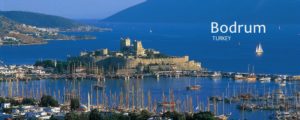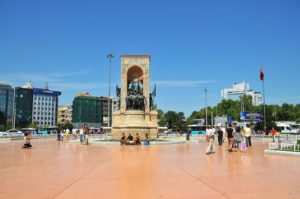Many people who know the personal history of the Bodrum Castle say there are three different faces to the castle. However, only two of those faces are present and the third one isn’t in evidence, for good reasons. There are five towers and seven different gates in this castle. There’s no debate that this place was once a fortress and a place of history. There’s a lot of different medieval banners and evidence left behind that dates it back to different origins and a lot isn’t known about it.
However, while there’s some Carian history traced to this castle, there’s no real evidence that points to traces of having any kind of Seljuk, Byzantine, Roman or Carian construction. There’s a long-lasting aura of the castle today that’s still prominent even though the ownership of the castle only lasted 120 years. What we do know is that it was held by a violent group known as the Knights of Hospital of St. John occupants.
When the castle was first founded, there’s a reminder of the French presence as the original Grand Master of the Order was named Philibert De Nailac. You can see the royal arms of France if you visit the north wall. Now, this is interesting to historians because while the French and English knights were somehow co-existing, their native lands were actually at war with each other over some pretty petty reasons. The knights had some pretty strong moral values to not let that tear them apart.
Recent Articles
One of the chief architects of the fortress was actually a German named Henrik Schlegelholdt. Within the knights, they identified people by their linguistics or the language they spoke. If you spoke German, that was the origin of your nationality within the Knights. However, in the 1400s, a lot of German Knights were leaving the Hospitaller Order and a lot of them were moving to the Order of Teutonic Knights which resided mostly in Prussia.
If you’re Spanish or Italian, you may also be pleasantly surprised to find some traces of your ancestry or upbringing in the Bodrum Castle. Bodrum Castle is regarded as one of the world’s best and finest underwater museums and is fascinating to archaeologists all around the world. When you visit the ground floor, you’ll notice that there’s jars or more commonly known as amphoras that are placed all around the grounds of the castle exterior and in the exhibits. These ancient jars were once used to carry important goods.
One of the forgotten faces of the Bodrum Castle is also known as a very prominent prison that a lot of people would prefer to forget because of the dark and disenfranchised history of the place. A man named Abulhamid II was the main establishing individual of the prison in 1893. The Bodrum Castle has a complex system of buried prisons and torture chambers that once the castle was taken over, were buried and forgotten with time.
Some of the most notable imprisonments include the 1909 imprisonment of two fanatic Islamic religious people. Once their rebellion was defeated, two of the head honchos of the movement were sentenced to life in prison and it’s suspected that they were tortured as well. Once the turn of the century happened, the land started seeing a rise in the crime rate in terms of people called mountain robbers.
These were people who would play the old day Robin Hood and rob from the rich. They would also help the poor when they could. One of their most prominent leaders was known simply as “Efe”. Not a lot is known about these people but they’re immortalized in movies and folk songs where people have painted a picture of how they believe they acted and conducted themselves.
One of the main problems of the fortress is that it was very prone and susceptible to naval attacks, which it realized with heavy losses in the first World War. While they had their own island and empire to defend, a lot of people were starting to realize that a naval force was necessary to defend the island. Some people were suggesting a Christian Trade with Turkey to help protect their fortress. The leaders and protectors of the castle remained largely ignorant until 1480 when the city was besieged.
The Ottomans didn’t have a lot of time to recover though because in 1571, they were dealt another large blow because some allied Christians ships containing Knights of Malta decimated the Turkish fleet. This was known as the battle of Lepanto. Immediately after this battle, the Ottoman Turks were no longer thought to be a threat to the Maltese Knights who were hellbent on making sure they could steal everything from the Ottoman that they could and harassing them continuously.
It wasn’t until 1798 that Napoleon Bonaparte eventually dissolved the ordeal and up until this point, there was non-stop conflicts between the North African coast and several aggressors. At a later date, there was some attempts to revive the Order of Malta but this order didn’t come back as a fighting or capable force of doing what they were used to. There are even to this day some countries that have the order of Malta but today they mostly work with hospital and medical groups rather than becoming a rebellion or fighting force.









